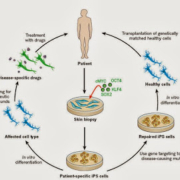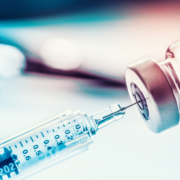The fragile case for new brittle bone treatment
Researchers are planning to use stem cells extracted from aborted fetuses to try to treat unborn babies with brittle bone disease, osteogenesis imperfecta (OI).
This new trial will involve injecting stem cells into a baby diagnosed in the womb as having OI. The stem cells will divide and become incorporated into bone tissue, where the collagen they produce will help strengthen the developing bones. Transplanted stem cells are more likely to be accepted by a fetus than by a baby because the immune system has not yet developed fully. After the first dose of cells, the babies will receive booster doses every six months until they are two years old.
Putting to one side – for now – concerns about the possible safety and health risks to the babies who will be injected with fetal stem cells, the treatment relies on women donating the body parts of their once healthy, but now aborted, babies. The treatment uses the remains of one human for experimentation on another human. And it needs the abortion industry to enable it all to happen as the ‘harvesting’ of the stem cells involves careful planning and cooperation.
We now find ourselves in a place where it is regarded by most researchers, journalists and commentators as good practice to abort a perfectly healthy baby in one part of a hospital then use its cells and tissue to (try to) treat an unborn baby with special needs in another part of the same hospital.
Of course at one level it is easy to see why.
If we look simply at the end result, it may appear justifiable. OI is a genetic and inherited disorder characterised by fragile bones that break easily. It is a lifelong condition that varies greatly in severity, affecting bone quality and bone mass. It is rare (occurring in approximately 1 in 20,000 individuals) but it can be devastating when it is severe. There is currently no cure for OI so treatment involves physical therapy, surgical interventions and /or medications.
The problem lies in the ‘means’ to this ‘good’ end. And the ‘means’, to put it bluntly and crudely, are cells that have been harvested from a dead baby.
Some might argue that these baby body parts would otherwise be wasted, thrown away. But not only does this involve complicity in abortion, it is pure utilitarianism, that says pretty well anything is justified as long as the end is (potentially) good.
But in good medical science the end does not justify the means.
It is possible to achieve great scientific and therapeutic advances within an ethical framework, just like Dr Shinya Yamanaka did with his ground-breaking ethical (adult) stem cell research, which deliberately and successfully avoided the destruction of human embryos.
In the same way, the obvious ethical problem with using cells from aborted fetuses should be driving researchers to use ethical sources such as umbilical cord, amniotic fluid or adult stem cells as sources for cell transplantation.
There has already been promising research on OI using adult stem cells and gene therapy. For example, it seems that it could be possible, according to research, to take stem cells from an unborn baby carrying the abnormal OI gene, manipulate them to correct the errant gene, and then put them back into the fetus to allow it to develop properly.
So, despite the media hype this week, this new research is not the only possible treatment for OI.
And we do need to beware of the media hype being generated around it by those who have vested interests and a hotline to the media. We need to be wary that we are not being given an exaggerated account which is high on hype and plays down the real safety risks, the lack of preliminary research (consisting of one experiment involving just two babies who were successfully injected with fetal stem cells, but who are still very young and the clinical benefits were only transient) as well as the ethical concerns.
Indeed, a few of the more observant readers may have spotted one hint amongst the coverage that perhaps this is not quite all it is hyped to be, when an expert on the condition and a spokesman for the Royal College of Paediatrics and Child Health, warned that actually this is not likely to effect a cure, but rather an: ‘improvement in quality of life’ which ‘would be a major step forward’.
Yamanaka was driven by a desire to be ethical in his own research. As a result he not only achieved great scientific advances within an ethical framework, he won the ultimate accolade and recognition for it in 2012, the Nobel Prize for Medicine. Surely proof, if needed, that the best research can still be ethical.






Leave a Reply
Want to join the discussion?Feel free to contribute!